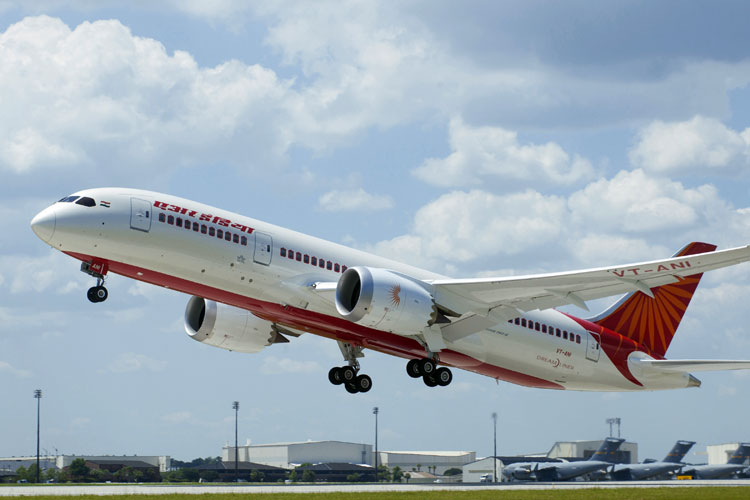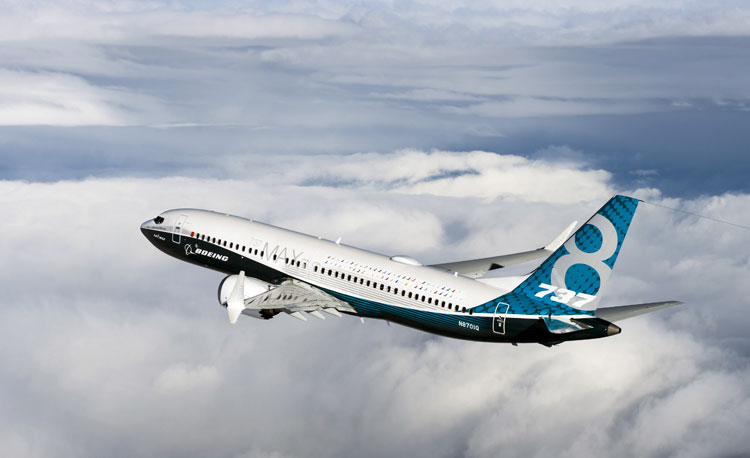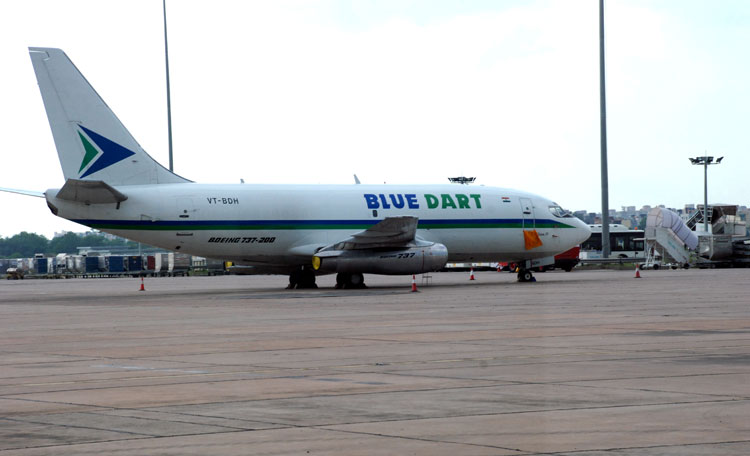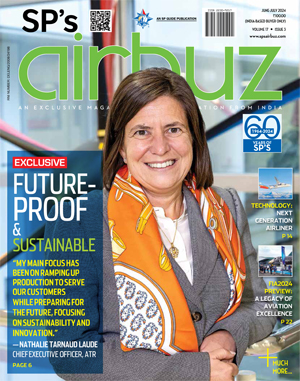Boeing forecasts 4-fold increase in fleet over the next 20 years for India
- Boeing forecasts more than 2,200 new jets valued at nearly $320 billion over the next 20 years
- Boeing also predicts that the country's passenger traffic will double by 2030 and
- India's civil aviation industry will require nearly 90,000 new pilots, technicians and cabin crew personnel during the next 20 years

INDIAN MARKET
Boeing forecasts strong aviation growth in India due to the country's growing economy and an expanding middle class, fueling demand for more than 2,200 new jets valued at nearly $320 billion over the next 20 years. With greater demand for domestic, regional and long-haul travel, Boeing anticipates India's commercial fleet to grow four-fold by 2039. Also, while COVID-19 remains a near-term challenge, the country's passenger traffic is forecast to outpace global growth, doubling from pre-pandemic levels by 2030.
Although the COVID-19 pandemic sharply reduced Indian air travel last year with 2020 year-end figures nearly 2015 levels, the country's domestic passenger traffic is recovering more rapidly than in most other countries and regions, recently reaching 76% of pre-pandemic levels. As per their forecast, domestic 2019 levels will come back by 2H 2022 and International full recovery will be seen through 2023.
These were some of the insights shared by Boeing in their forecast with the "Commercial Aviation Market Outlook" for the Indian market on April 07, 2021 in a virtual presentation. The presentation was made by David Schulte, Managing Director, Regional Marketing, Boeing Commercial Airplanes and joined alongside by Salil Gupte, President, Boeing India.

"With greater demand for domestic, regional and long-haul travel, we anticipate India's commercial fleet will grow four-fold by 2039"
—David Schulte, Managing Director, Regional Marketing, Boeing Commercial.
Major insights from Boeing's market forecast for India included the following:
- Single-aisle airplanes will continue to serve growth in domestic as well as regional markets. Indian operators will need 1,960 new single-aisle airplanes over the next 20 years.
- To meet long-term demand for long-haul connectivity, especially to North America and Europe, Boeing forecasts a 20-year market for 260 new widebody airplanes in India.
- India air cargo growth is expected to average 6.3% annually over the next 20 years, driven by India's manufacturing and e-commerce sectors.
- India's civil aviation industry will require nearly 90,000 new pilots, technicians and cabin crew personnel during the 20-year forecast period, with a growing number of women choosing to pursue aviation careers.
- Global Services market in India to reach $365 billion in the next 20 years.
India's passenger market is the world's third largest and Indian carriers have opportunities for growth in international markets, according to the Boeing forecast. Several airlines have started or plan to start non-stop routes between India and North America to serve a passenger preference for direct service flights. Boeing stated that India's fundamental drivers still exist for a robust growth and they are contributing to it with 100% of the traffic between India and the U.S. being flown on Boeing widebody aircraft.

GLOBAL MARKETS
Painting a holistic picture for 2020 and post-Covid recovery, Boeing mentioned that while the global passenger operations were down, freighter flights were above normal. While the passenger figures were still only 50% of 2019, cargo flights were 120% of normal. Domestic traffic was leading the recovery with plane movements back to 58% globally and 51% in Asia Pacific of pre-Covid days. The revival in plane movements was led by China (back to 87%) and North America (to 71%). Airlines were putting their fleets back in service with 75% of single-aisle and 65% of wide body aircraft back in service already. Not surprisingly, 100% of the freighters are already in service and are being used much more than earlier.
Boeing also forecasts the various travel segments recovering at different rates. There is a pent-up demand for 'Visiting Friends and Relatives (VFR)' and therefore it will recover the fastest followed by 'Leisure' travel. High value 'Business' travel will be the slowest to recover. While the aviation business saw a significant dip in 2020 the recovery is going to be quick and by 2025, the global aviation market will be back on trend growth. This is not for the first time, aviation sector has faced a major crisis and the market has shown resilience with 'Cargo' as the current lifeline.

"Boeing currently does not have any plans for having a turbo-prop or a regional aircraft to service the regional routes. These short haul/regional sectors very quickly develop into a significant route and become ideally suited to be serviced by a 737 Max. Therefore, we take a long-term view in the discussions with the operators on these routes"
—Salil Gupte, President, Boeing India
Over the next 10 years (2020-2029), 18,350 new airplane deliveries are expected. Regional Jets account for 1,240 (6%), Single Aisle for 13,570 (74%), Widebody for 3,060 (17%) and Freighter for 480 planes (3%). However, over the next 20 years (2020-2039), 43,110 new airplane deliveries are expected. Regional Jets account for 2,430 (6%), Single Aisle for 32,270 (75%), Widebody for 7,480 (17%) and Freighter for 930 planes (2%).
Over the next 20 years, the air cargo market is forecast to grow at an average annual rate of 4%, led by the robust markets in Asia. As a result, the fleet is forecast to expand from 2,010 freighters to 3,260 over the next two decades. This growth will drive the need for 2,430 new and converted freighters. Of these, 930 airplanes will be new widebody freighters and 1,500 will be passenger airplane conversions. Boeing pointed out that currently more than 90% of world's freighter capacity is Boeing freighters.

As per Boeing, over the next 20 years, the world-wide Global Services market will increase to $9040 billion (over $9trillion). In the next 20 years, Asian market will drive the growth in the aviation sector 41% of single aisle deliveries and 45% of wide body aircraft being delivered in this region.
Looking at the near-term, medium-term and long-term outlook, Boeing stated that the current downturn is likely to lead to the replacement of many older passenger airplanes. This accelerated replacement cycle will position airlines for the future by improving the efficiency and sustainability of today's fleet. While aviation has seen periodic demand shocks since the beginning of the Jet Age, the industry has recovered from these downturns every time. It will likely take about three years for air travel to return to 2019 levels, and it will be a few years beyond that for the industry to return to long-term growth trends. The maturation of many emerging market economies will further increase consumer spending share of economic activity, bolstering demand for air travel. The current market disruption will shape airline fleet strategies long into the future as airlines make decisions to renew their fleets and resume growth. Airlines will focus on building versatile fleets that provide future network flexibility, maximising capability while minimising risk, and improving efficiency and sustainability.
Boeing also highlighted its commitment to environmental excellence through new Airplane Technology, improved operational efficiencies, ATM modernisation, Electrification of aircraft, use of Sustainable Aviation Fuel and the use of an ecoDemonstrator.
Boeing Commercial Aviation Market Outlook has been an established market forecast and has been 99% accurate in its predictions during the past 20 years.





